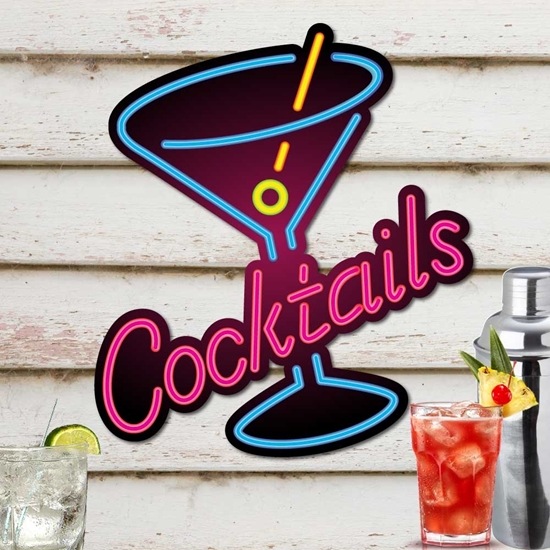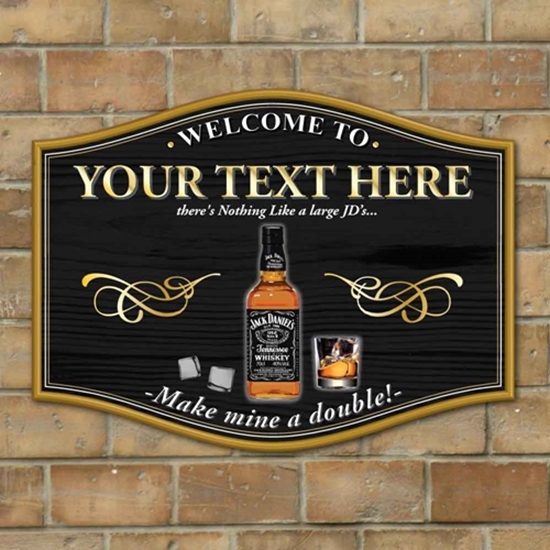Recommended Reasons On Choosing Hanging Signs
Wiki Article
How Do Bar Signs Differ From One Another In Relation To Their Intended Purpose?
The purposes of bar signs can be quite different. Bar signs may serve many different purposes. Branding
Objective: To create and strengthen the bar's brand identity.
Features: Display the bar's logo, name and the signature colors. It's designed to be a prominent element that reflects the overall theme and vibe of the bar.
Customized metal signs bearing the bar's name or a neon sign with its logo are two examples.
2. Information
The purpose of this newsletter is to inform patrons of important information about the pub.
Features: Clear text with easy-to understand information about hours of operations WiFI passwords, hours of operation, home rules or toilet areas.
For example, a sign near the entry that states operating hours, or points to toilets.
3. Decorate your house with these Decorative Items
Goal : To improve the aesthetics and atmosphere of the bar.
The features are usually creative or thematic and are a great addition to the decor of the entire bar. The bar may not have particulars or text.
For example: vintage advertisements for beer, humorous signs or quirky artwork.
4. Promotional
Purpose: To promote specific products, events, or specials.
Highlights: Catchy designs that highlight special deals and upcoming events or new menu items. It could include temporary or removable elements.
Examples include chalkboards that display daily specials; banners that promote special deals during happy hour; posters for upcoming event.
5. Directional
Scope: To direct patrons within the bar.
Features: Clear arrows and instructions to help customers navigate the bar, for example, getting to the restrooms, exits, or other sections within the bar.
Examples: Directional signs for various seating locations.
6. Regulatory/Compliance
Objective: To meet the law and to ensure the safety of our customers.
Highlights: Required signage that complies with legal requirements, like signs indicating areas where smoking is permitted, maximum occupancy or emergency exits.
For instance: "No Smoking", occupancy limits and emergency exit signs.
7. Interactive
The goal is to engage the customer and create an enjoyable experience.
Features: Elements designed to facilitate interaction with patrons including interactive surfaces or write-on surface.
For instance, chalkboards that can be used to write messages to customers or signs with QR code links to digital menus and social media.
8. Thematic
Goal : To create an environment or theme.
The signs are designed to align with the theme of the bar, which contribute to the overall experience and atmosphere.
Examples: Pirate signs in nautical bars and rustic wooden signs in the bar with a rural theme.
9. Menu
The purpose of this page is to display the bar's menu offerings.
Features: Clearly list beverages and food items with prices. The list can be permanent or changeable.
Examples include digital screens that show the menu items rotating, and drinks lists that are mounted on the wall.
Every bar sign is designed to fulfill specific functions and has been specifically designed for this reason. Understanding the different types of signage will assist bar owners choose and place signs to satisfy their needs and improve the experience for patrons. Take a look at the top window vinyl for blog advice including personalised hanging pub signs, gin bar sign, large personalised bar signs, personalised cocktail bar sign, novelty bar signs, garden bar sign personalised, novelty bar signs, bar signs for home, pub sign design ideas, pub signs and more.

How Do Bar Signs Differ With Regards To Customisation And Personalisation
The personalization and customization of bar signs is made to reflect the design the brand, atmosphere and style of an establishment. What are the differentiators in bar signs with regard to customization and individualization? Material
Flexible Material Metals, woods and acrylics.
Personalization: Select materials that complement the style of your bar as well as its intended style. For example, rustic wood is perfect for a warm bar. A sleek acrylic table is great for a contemporary lounge.
2. The Design
Custom Graphics Logos, illustrations, and typography.
Personalization - Use distinct brand elements and imagery or theme designs to create a unique bar atmosphere.
3. Size and Shape
From tabletop signs for small tables to large outdoor banners, we provide a range of sizes.
Personalization: Adjust the shape and size of signs to fit particular spaces and to accommodate branding needs, such as big letters for a bold piece, or small signs for intimate areas.
4. Color
Custom Color Schemes: Pantone Matching, RGB Options and Customized Finishes.
Personalization Choose colors that are in line with the brand's identity, the interior decor, or the preferences of the patrons you want to serve.
5. Lighting
Custom Lighting Effects, including neon backlit LEDs edge-lit, and projection.
Personalization: Select lighting that can enhance visibility, ambiance and mood while also enhancing the overall look of the bar. For instance, select neon or LED lighting for an upscale look.
6. Text Messages
Custom Text: Bar name, slogans, quotes, menu items, event announcements.
Personalization: Design a customized message that resonates with customers, reflect the bar’s character and effectively convey promotions or specials, as well as brand values.
7. Interactivity
Custom Interactive Features Digital displays or interactive projections.
Personalization: Make use of interactive elements like digital menus or games to create memorable experiences that will engage your customers.
8. Installation and Mounting
Custom Mounting Solutions - Hanging or wall-mounted, freestanding or window-mounted.
Personalization: Select mounting solutions that integrate seamlessly into the overall design scheme.
9. Event-specific and seasonal
Custom Themes: Holiday decorations or seasonal themes.
Personalization: Update signs regularly to reflect seasonal changes, or to celebrate holidays. You can also advertise particular events. This creates a dynamic environment that is enthralling for your customers.
10. Brand Consistency
Custom Branding Elements for Branding: Logos images, fonts, colors and colors.
Personalization: Make sure you are consistent with all signage and brand materials to help build brand recognition, reinforce your brand identity and create an enjoyable visual experience for your customers.
Benefits from Personalization and Customization
Brand Differentiation - Stand out against the rest and make an impression that lasts.
Brand Identity - Reinforce the brand's identity and values to foster customer loyalty.
Atmosphere Enhancement : Match the signage with the bar's decor and the desired ambience, enhancing the overall experience for customers.
Engagement: Customized signage can spark conversations, generate excitement and spur patron interaction.
With the help of personalization and customization options, bar owners can create innovative and memorable signage that not only convey information efficiently, but enhance the aesthetics, ambience and image of their establishment. Follow the top hanging signs url for site tips including personalised metal pub signs, signs for garden bar, staying inn sign, personalised garden bar signs, the staying inn bar sign, personalised outdoor pub signs, personalised outdoor bar signs, to the pub sign, bar sign design, make your own bar sign and more.

What Are The Differences Between Bar Signs From One Another In The Context Of Regulations?
Signs for bars are subject to diverse regulations imposed by local, state and federal authorities to ensure safety for the public, aesthetic standards and also to ensure compliance with the zoning regulations. Here's how bar signs differ according to the rules: 1. Size and Regulations on Positioning
Zoning Laws - Regulations establish the place of signs, their size and height as well as their distance from road lines and buildings that are adjacent to them, or property boundaries.
Historic Districts: Signs could be restricted in order to maintain the historical character of certain districts. This may include restrictions on design, size and the material.
2. Illumination Restrictions
Light Pollution - Regulations could restrict the brightness and colors of illuminated signs in order to maintain the nighttime ambience and limit light pollution.
Safety: Signs should not create glare or distracting light that could cause danger to drivers or pedestrians. This is especially important close to roads.
3. Signage Content
Alcohol Advertising Certain states restrict alcohol advertisements by preventing certain images and other content that may be attractive to minors.
Health Warnings: Laws could require the display of health warnings regarding the dangers of drinking alcohol or smoking cigarettes.
4. Historic Preservation Regulations
Architectural Compatibility: Signs within historic districts need to be in line with the architectural style and character of the area, often needing approval from preservation commissions or boards.
Signs are subject to restrictions by their materials, designs, and colors to preserve historical integrity.
5. Sign Permitting Process
Permit Conditions: Bar owners need to obtain permits before installing or altering signs. This may involve submitting plans, paying fees, and obtaining approval by local authorities.
Code Compliance: Signs must conform to the building codes and fire safety regulations as well as accessibility standards, to guarantee public safety and accessibility for people with disabilities.
6. Sign Removal and Maintenance
Maintenance Requirements: Bar owners are responsible for maintaining signs in good condition, ensuring they are solid and safe from hazards, and comply to the rules and regulations.
Abandoned Signs: Regulations may govern the removal of signs that are abandoned or damaged to prevent blight, while keeping the appearance of the area around it.
7. Digital Signage Regulations
Content Restrictions - Laws may restrict the content that is shown on digital signage for example by preventing flashing lights and graphic images that are offensive.
Limitations on Operation: Regulations can limit the intensity, brightness, or frequency of changes in digital signs to limit visual clutter and distractions.
8. Enforcement and Penalties
Inspections Local authorities conduct periodic inspections in order to verify that signs are in compliance with regulations. The issue of citations is for violations.
Penalties. If you do not comply, there could be fines, citations issued in order to alter or remove signs, or take legal actions.
9. Procedure for Signing Variance
Variance Applications: Bar owners can apply for variances that allow them to depart from standard signage regulations providing a reason for the variance and mitigating any negative impact on public safety or aesthetics.
Public Input: Certain variations might require input from the community like public hearings, comments from property owners or businesses associations, or comments by members of the community.
10. Engagement, Community Input and Engagement
Public Consultation - Some communities include community members as part of the creation and the implementation of signage regulations through organizing public meetings or surveys.
Sign regulations could include provisions that enhance the look of signage, encourage local businesses or assist in the revitalization of an area.
By adhering and understanding the rules for signage Bar owners can ensure that their signage adds an aesthetic appeal to their establishments, are a positive contribution to the local community and are in compliance with the legal requirements. This helps reduce the chance of legal battles, fines or penalties. Have a look at the recommended this post for website examples including home made bar sign, pub signs to buy, personalised signs for bar, personalised pub signs, the staying inn bar sign, sign for garden bar, large bar signs, personalised garden bar signs, outdoor personalised bar sign, pub wall sign and more.
